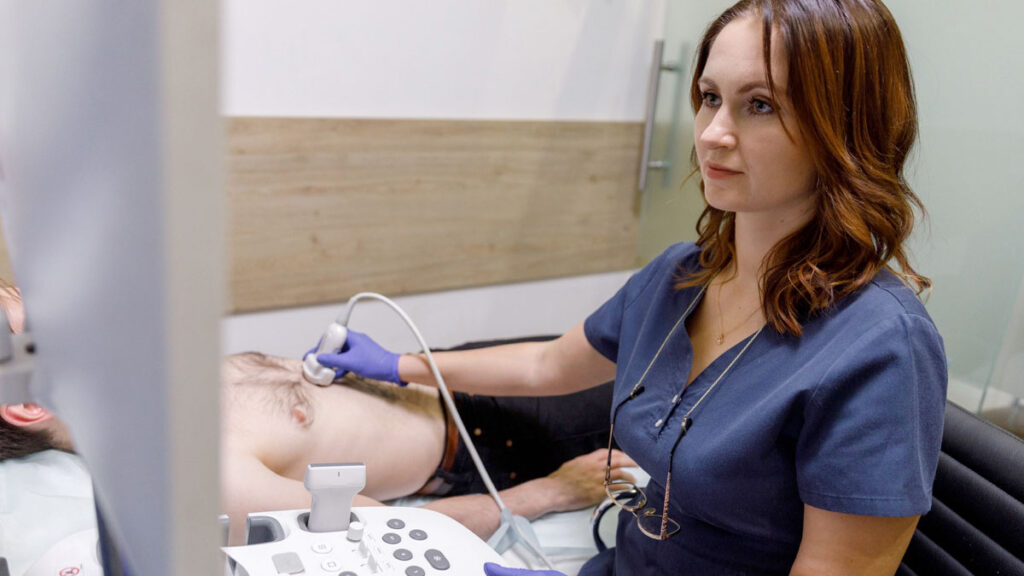
What is Heart Disease?
February is American Heart Month, a national observance designed to promote awareness of heart disease. Heart disease is the leading cause of death in the United States, according to the CDC. Although it is prevalent, it is preventable and treatable with lifestyle changes and screening.
Heart disease, also known as cardiovascular disease, refers to several conditions that affect the cardiovascular system. These include coronary artery disease, aortic aneurysm, atherosclerosis, and peripheral arterial disease among others. There are several risk factors for heart disease, some of which can be lowered with lifestyle changes. Risk factors include:
- High blood pressure
- High cholesterol
- Diabetes
- Obesity
- Physical inactivity
- Tobacco use
- Family history
3 Types of Heart Disease to Screen For
Coronary Artery Disease
Coronary artery disease is the most common type of heart disease. It is named for the coronary arteries, which are responsible for supplying blood to the heart. Coronary artery disease, or CAD, occurs when there is reduced blood flow to the heart. This is caused by a narrowing of the coronary arteries, also known as atherosclerosis, due to plaque buildup along the arterial walls.
This plaque buildup is caused by excessive fatty deposits accumulated over time. It’s important to note that CAD is not a sudden onset disease, but may have sudden results, such as a heart attack. There may be few symptoms of CAD prior to a heart attack. These symptoms can include:
- Chest pain
- Nausea and light-headedness
- Pain in the arms or shoulders
- Shortness of breath
Aortic Aneurism
An aortic aneurysm is a heart condition that affects the aorta. The aorta is the largest blood vessel within the body and runs from the heart through to the abdomen. There are two types of aortic aneurysms: abdominal aortic aneurysms and thoracic aortic aneurysms.
An abdominal aortic aneurysm is characterized by the enlargement of the lower aorta. Thoracic aortic aneurysm occurs when there is an enlargement of the part of the aorta that passes through the chest to the diaphragm. Both aneurysms affect the aorta’s ability to deliver oxygenated blood to the rest of the body. These are serious conditions that can result in aortic rupture, which is life-threatening. Aortic aneurysms tend to grow slowly over time and the symptoms are limited. Some symptoms can include:
- Dizziness
- Shortness of breath
- Abdominal or lower back pain
- Chest or upper back pain
- Swelling in the neck
- Difficulty swallowing
Peripheral Arterial Disease
Peripheral arterial disease, also known as PAD, is another type of heart disease. PAD is characterized by the narrowing of the blood vessels that carry oxygenated blood throughout the body. Most commonly, PAD affects the vessels that carry blood to the lower extremities. Like coronary artery disease, it is often caused by atherosclerosis due to the buildup of fatty plaque within the blood vessels. This buildup can cause blood clots that limit blood flow to the legs and feet, and if left untreated could lead to permanent damage in the legs or even amputation.
PAD develops over time, and there may not be symptoms early on. When symptoms do occur, they include:
- Cramping and aching in the hips, legs, or feet
- Fatigue or discomfort in the legs
Screening with Vascular Ultrasound
While the different types of heart disease affect different areas of the cardiovascular system, the risk factors are often the same. The diseases all develop over time, often many years. In many cases, they can be difficult to detect early on, so physicians may recommend screening based on individual risk factors.
Screening of the cardiovascular system can be done with vascular ultrasound exams. Vascular ultrasound is a safe, noninvasive diagnostic imaging technique designed to examine the blood vessels within the body. These ultrasound exams use Doppler technology, which involves the use of harmless, high-frequency soundwaves to penetrate the body and create images and videos of the veins and arteries. Registered Vascular Technologists or RVTs often perform the exams.
Vascular ultrasound can be an important tool when it comes to diagnosing cardiovascular disease. The images can show potential plaque buildup, a bulging of the arteries, or any blockages that indicate blood clots. During the exam process, an RVT will use a handheld device called a transducer to gently compress different areas of the body, thereby compressing the veins. Any stiffness can also be determined this way, which is another sign of arterial disease.
Reducing Risk of Heart Disease
In addition to increased awareness about heart disease and its risk factors, American Heart Month is designed to promote heart-healthy living. There are ways to reduce individual risk factors for heart disease by making lifestyle changes. These include:
- Eating healthier
- Increasing physical exercise
- Not smoking
Regular heart disease screenings should also be included for those with certain risk factors. Vascular ultrasound exams are a safe and noninvasive way to screen the veins and arteries, and your physician may recommend one if you are at risk. It’s important to remember that although heart disease is common, it is preventable. For more information on American Heart Month and heart disease, visit the National Heart, Lung, and Blood Institute here.
Guest Contributor: Jordan Galerkin
Sources:
- American Heart Month. National Heart, Lung, and Blood Institute. https://www.nhlbi.nih.gov/education/american-heart-month
- Carotid Artery Disease. Mayo Clinic. https://www.mayoclinic.org/diseases-conditions/carotid-artery-disease/symptoms-causes/syc-20360519
- Coronary Artery Disease. Centers for Disease Control. https://www.cdc.gov/heartdisease/coronary_ad.htm
- Heart Disease. Centers for Disease Control. https://www.cdc.gov/heartdisease/index.htm
- Peripheral Artery Disease. American Heart Association. https://www.heart.org/en/health-topics/peripheral-artery-disease/
- Types of Aneurysms. American Heart Association. https://www.heart.org/en/health-topics/aortic-aneurysm/types-of-aneurysms
- Types of Ultrasound. Ultrasound Quotes. https://www.ultrasoundquotes.com/blog/doppler-vs-duplex/
